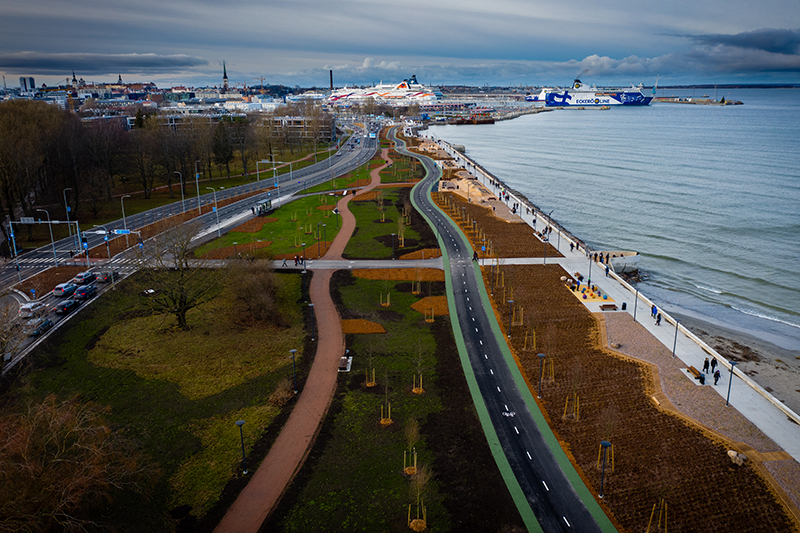The construction of a section of the Reidi road in Tallinn, Estonia contributes to faster, safer and more convenient connections from the city’s ports to the main road network. The project provided 1.93 km of new road, and reconstructed around 1.41 km of an existing section along the Tallinn-Narva route. Works also covered the construction of footpaths, cycle lanes, a beach promenade, landscape architecture and various features to mitigate the road’s environmental impact. Reidi road opened to traffic on 29 November 2019.
New road improves transport links in Tallinn, Estonia
- 29 July 2020
It is not only a road, but a beautiful leisure area that brings people to the sea to make Tallinn even more deserving of the title of gorgeous sea city. It is important for the port to further increase the competitiveness of the region.
This investment included the installation of variable message electronic traffic signs and new traffic lights. It was necessary to construct and improve road lighting infrastructure, telecommunications lines, water supply pipes, sewage and rainwater pipes, and gas and power lines. A total of 10.5 km of pedestrian and cycle routes have been built alongside the road. The design also provided four parking areas.
Recreational area
The project was more than just about building a road. An abandoned area along seaside has been transformed into a popular and widely used recreational area for adults and children. New playgrounds have been built and the area is equipped with several electronic stands for educational purposes. Additionally, new shore fortifications were built at the Pikksilma Street-Russalka Memorial.
Motorists are not the only users benefitting from the scheme. The new road helps improve public transport connections in the city. On the day the road opened, the local bus route number 66 started running on the route, connecting the eastern district of Lasnamäe with northern Tallinn.
Economic benefits
By helping to link Tallinn’s ports to main roads, the Reidi road will benefit the country’s economy. Cargo and international traffic will move more smoothly along the route, which forms part of the EU’s Trans-European Transport Network (TEN-T). Through TEN-T, the EU is spending billions of Euros to improve transport connections in and between member states.
Tallinn is Estonia’s capital city and home around 434 000 people. The city’s ports provide access to the Baltic sea and international shipping routes. Tallinn has a broad-based economy, but its particular strengths lie in logistics, information technology and tourism. Around 4.3 million people visit the city every year.
Total investment and EU funding
Total investment for the project “Construction of Reidi road in Tallinn” is EUR 42 957 239, with the EU’s Cohesion Fund contributing EUR 24 225 816 through the “Cohesion Policy” Operational Programme for the 2014-2020 programming period. The investment falls under the priority “Transport and energy networks”.

